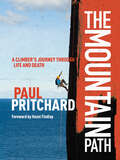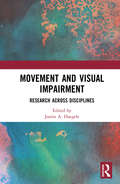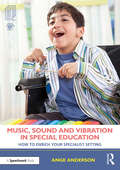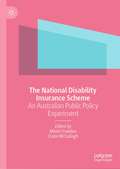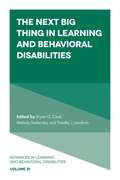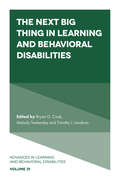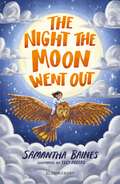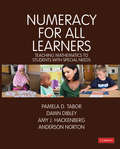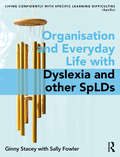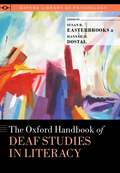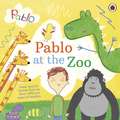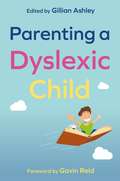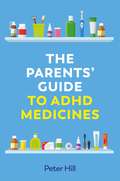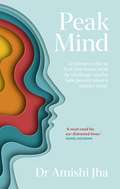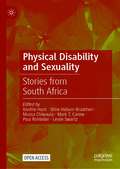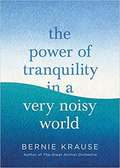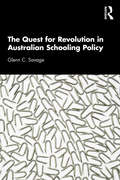- Table View
- List View
The Mountain Path: A climber's journey through life and death
by Paul Pritchard‘All I wanted to do was go to sleep. And I was certain that if I did drift off, it would be for the last time.’In 1998, Paul Pritchard was struck on the head by a falling rock as he climbed a sea stack in Tasmania called the Totem Pole. Close to death, waiting for hours for rescue, Pritchard kept himself going with a promise that given the chance, he would ‘at least attempt to live’.Left hemiplegic by his injury, Pritchard has spent the last two decades attempting to live, taking on adventures that seemed impossible for someone so badly injured while plumbing the depths of a mind almost snuffed out by his passion for climbing.Not content to simply survive, Pritchard finds ways to return to his old life, cycling across Tibet and expanding his mind on gruelling meditation courses, revisiting the past and understanding his compulsion for risk. Finally, he returns to climb the Totem Pole, the place where his life was almost extinguished.The Mountain Path is an adventure book like no other, an exploration of a healing brain, a journey into philosophy and psychology, a test of will and a triumph of hope.
Movement and Visual Impairment: Research across Disciplines
by Justin A. HaegeleThis is the first book to offer an in-depth review of research pertaining to individuals with visual impairments across the full span of movement-related disciplines, from biomechanics and motor learning to physical education and Paralympic sport. Each chapter highlights current research trends, future research directions, and practical implications in a key discipline or area of professional practice, drawing on empirical research evidence and opening up new avenues for cross-disciplinary working. Covering physical activity across the life course, from children and young people through to older adults, and addressing the important topic of deafblindness in some depth, the book goes further than any other book published to date on visual impairment and movement. This is essential reading for all advanced students and researchers working in sport, exercise and disability, and an invaluable reference for practitioners and service providers, from in-service teachers and camp directors to physical therapists and physical activity promotion specialists.
Movement and Visual Impairment: Research across Disciplines
by Justin A. HaegeleThis is the first book to offer an in-depth review of research pertaining to individuals with visual impairments across the full span of movement-related disciplines, from biomechanics and motor learning to physical education and Paralympic sport. Each chapter highlights current research trends, future research directions, and practical implications in a key discipline or area of professional practice, drawing on empirical research evidence and opening up new avenues for cross-disciplinary working. Covering physical activity across the life course, from children and young people through to older adults, and addressing the important topic of deafblindness in some depth, the book goes further than any other book published to date on visual impairment and movement. This is essential reading for all advanced students and researchers working in sport, exercise and disability, and an invaluable reference for practitioners and service providers, from in-service teachers and camp directors to physical therapists and physical activity promotion specialists.
Music, Sound and Vibration in Special Education: How to Enrich Your Specialist Setting
by Ange AndersonThis book provides practical guidance on how to successfully incorporate music, sound and vibration into your special school, exploring the rich benefits that musical opportunities offer for children with physical, mental health and learning disabilities. Music has been shown to improve mood, lift depression, improve blood flow and even ease pain, whilst musical interventions can encourage communication and enable relaxation. This book explores the physical, cognitive and mental health benefits of music use in special schools, introducing therapies and innovations that can be adapted for use in your own specialist setting. Key features include: • Chapters exploring a range of music therapies and technologies that allow all students to access the benefits of music, sound and vibration, from one-to-one therapeutic music sessions to vibro-acoustic therapy and sing and sign • Case studies and anecdotes showcasing the innovative ways that special schools are using music, and providing concrete examples of how to deliver, record and access music provision • Photocopiable policies, risk assessments and links to useful resources Written by an author with a wealth of experience in special education, this book is essential reading for all those working in specialist settings or with children with SEND.
Music, Sound and Vibration in Special Education: How to Enrich Your Specialist Setting
by Ange AndersonThis book provides practical guidance on how to successfully incorporate music, sound and vibration into your special school, exploring the rich benefits that musical opportunities offer for children with physical, mental health and learning disabilities. Music has been shown to improve mood, lift depression, improve blood flow and even ease pain, whilst musical interventions can encourage communication and enable relaxation. This book explores the physical, cognitive and mental health benefits of music use in special schools, introducing therapies and innovations that can be adapted for use in your own specialist setting. Key features include: • Chapters exploring a range of music therapies and technologies that allow all students to access the benefits of music, sound and vibration, from one-to-one therapeutic music sessions to vibro-acoustic therapy and sing and sign • Case studies and anecdotes showcasing the innovative ways that special schools are using music, and providing concrete examples of how to deliver, record and access music provision • Photocopiable policies, risk assessments and links to useful resources Written by an author with a wealth of experience in special education, this book is essential reading for all those working in specialist settings or with children with SEND.
My Mummy is Autistic: A Picture Book and Guide about Recognising and Understanding Difference
by Joanna Grace Heath GraceThis original and imaginative book has been created by five-year-old Heath. In it, Heath illustrates his understanding of his autistic mother Joanna, giving insight into the different ways in which autistic and neurotypical people understand language. In his simple and uncomplicated style, accompanied by bright and colourful illustrations, Heath explains why his mother’s brain understands words at a different rate than his own, and how they communicate in spite of their differences. Heath’s work is accompanied by explanatory notes exploring Joanna’s own experience of autism and language. Key features include: A unique exploration of language processing differences told through the eyes and mind of a child. Bright, colourful pictures and simple language, perfect for inspiring conversations about neurodiversity between people of all ages. Explanatory text that can be read alongside the story. Autism portrayed as a positive and permanent neurological difference, not deficit. The combination of story and commentary makes this book a unique tool for all people seeking to explain and understand difference, regardless of age and experience. Although focusing on autism as an example of neural difference, it can be used to explain and celebrate neurodiversity in all its forms and will help to build relationships across the divide of neurological difference.
My Mummy is Autistic: A Picture Book and Guide about Recognising and Understanding Difference
by Heath Grace Joanna GraceThis original and imaginative book has been created by five-year-old Heath. In it, Heath illustrates his understanding of his autistic mother Joanna, giving insight into the different ways in which autistic and neurotypical people understand language. In his simple and uncomplicated style, accompanied by bright and colourful illustrations, Heath explains why his mother’s brain understands words at a different rate than his own, and how they communicate in spite of their differences. Heath’s work is accompanied by explanatory notes exploring Joanna’s own experience of autism and language. Key features include: A Foreword by broadcaster, environmentalist and author Chris Packham, on acceptance, understanding, and expressing an autistic reality A unique exploration of language processing differences told through the eyes and mind of a child. Bright, colourful pictures and simple language, perfect for inspiring conversations about neurodiversity between people of all ages. Explanatory text that can be read alongside the story. Autism portrayed as a positive and permanent neurological difference, not deficit. The combination of story and commentary makes this book a unique tool for all people seeking to explain and understand difference, regardless of age and experience. Although focusing on autism as an example of neural difference, it can be used to explain and celebrate neurodiversity in all its forms and will help to build relationships across the divide of neurological difference.
The National Disability Insurance Scheme: An Australian Public Policy Experiment
by Mhairi Cowden Claire McCullaghThe National Disability Insurance Scheme (known commonly as the NDIS) was introduced as a radical new way of funding disability services in Australia. It is a rare moment in politics and policy making that an idea as revolutionary, ambitious and expensive as the NDIS makes it into its implementation phase. Not surprising, then, that the NDIS has been described by many as the biggest social shift in Australia since Medicare. This book will be a key text for scholars and public policy professionals wishing to understand the NDIS, how it was designed, and lessons learned through its introduction and roll-out. The book addresses how the NDIS has intersected with particular cohorts and sectors, and some of the challenges that have arisen. It highlights the experiences of people with disability through a collection of personal stories from participants and families in the NDIS. The key insights from this large scale public policy experiment are relevant for anyone interested in social change in Australia, or internationally.
The Next Big Thing in Learning and Behavioral Disabilities (Advances in Learning and Behavioral Disabilities #31)
by Bryan G. Cook Melody Tankersley Timothy J. LandrumResponding to the need for educational stakeholders to be equipped to plan for constantly evolving developments in policy and practice for learners with learning and behavioral disabilities, this edited collection collates contributions from authors who predict what the next big things in the field will be, and offer recommendations on how to prepare for the future they envision. The chapters cover a broad range of topics that include developments related to students’ legal rights and services, how research is utilized by practitioners, using practice-based evidence to promote the use of evidence-base practices, open science, neuroscience and special education, professional development for teachers, adaptive tier-2 interventions, the field of emotional and behavioral disorders, reading and students with autism spectrum disorder, and innovations in early writing. Chronicling, too, the concerns and cautions that the authors have about what they see as the next big thing, this collection is a compelling resource for anyone looking to the future of the field, and thinking about how they can be at the front of developments in order to navigate change in a way that generates positive effects.
The Next Big Thing in Learning and Behavioral Disabilities (Advances in Learning and Behavioral Disabilities #31)
by Bryan G. Cook, Melody Tankersley, Timothy J. LandrumResponding to the need for educational stakeholders to be equipped to plan for constantly evolving developments in policy and practice for learners with learning and behavioral disabilities, this edited collection collates contributions from authors who predict what the next big things in the field will be, and offer recommendations on how to prepare for the future they envision. The chapters cover a broad range of topics that include developments related to students’ legal rights and services, how research is utilized by practitioners, using practice-based evidence to promote the use of evidence-base practices, open science, neuroscience and special education, professional development for teachers, adaptive tier-2 interventions, the field of emotional and behavioral disorders, reading and students with autism spectrum disorder, and innovations in early writing. Chronicling, too, the concerns and cautions that the authors have about what they see as the next big thing, this collection is a compelling resource for anyone looking to the future of the field, and thinking about how they can be at the front of developments in order to navigate change in a way that generates positive effects.
The Night the Moon Went Out: A Bloomsbury Reader (Bloomsbury Readers)
by Samantha BainesA heart-warming adventure story by award-winning comedian, actress, broadcaster, hearing-aid wearer and author of Harriet Versus the Galaxy, Samantha Baines. Aneira is a hearing-aid wearer and she is super scared of the dark. When the moon suddenly goes out one night, Aneira is on a mission to turn it back on! With the help of her owl friend, she sets off on a journey to fix the moon and overcome her fear. This powerful story features beautiful black-and-white illustrations by Lucy Rogers.The Bloomsbury Readers series is packed with book-banded stories to get children reading independently in Key Stage 2 by award-winning authors like double Carnegie Medal winner Geraldine McCaughrean and Waterstones Prize winner Patrice Lawrence. With black and white illustrations and online guided reading notes written by the Centre for Literacy in Primary Education (CLPE), this series is ideal for home and school. For more information visit www.bloomsburyguidedreading.com.Book Band: Dark Blue (Ideal for ages 9+)
Numeracy for All Learners: Teaching Mathematics to Students with Special Needs (Math Recovery)
by Pamela D Tabor Dawn Dibley Amy J Hackenberg Anderson NortonNumeracy for All Learners is a wide-ranging overview of how Math Recovery® theory, pedagogy, and tools can be applied meaningfully to special education to support learners with a wide range of educational needs. It builds on the first six books in the Math Recovery series and presents knowledge, resources, and examples for teachers working with students with special needs from Pre-K through secondary school. Key topics include: dyscalculia, what contemporary neuroscience tells us about mathematical learning, and differentiating assessment and instruction effectively to meet the needs of all students in an equitable framework.
Numeracy for All Learners: Teaching Mathematics to Students with Special Needs (Math Recovery)
by Pamela D Tabor Dawn Dibley Amy J Hackenberg Anderson NortonNumeracy for All Learners is a wide-ranging overview of how Math Recovery® theory, pedagogy, and tools can be applied meaningfully to special education to support learners with a wide range of educational needs. It builds on the first six books in the Math Recovery series and presents knowledge, resources, and examples for teachers working with students with special needs from Pre-K through secondary school. Key topics include: dyscalculia, what contemporary neuroscience tells us about mathematical learning, and differentiating assessment and instruction effectively to meet the needs of all students in an equitable framework.
Numeracy for All Learners: Teaching Mathematics to Students with Special Needs (Math Recovery)
by Pamela D Tabor Dawn Dibley Amy J Hackenberg Anderson NortonNumeracy for All Learners is a wide-ranging overview of how Math Recovery® theory, pedagogy, and tools can be applied meaningfully to special education to support learners with a wide range of educational needs. It builds on the first six books in the Math Recovery series and presents knowledge, resources, and examples for teachers working with students with special needs from Pre-K through secondary school. Key topics include: dyscalculia, what contemporary neuroscience tells us about mathematical learning, and differentiating assessment and instruction effectively to meet the needs of all students in an equitable framework.
Organisation and Everyday Life with Dyslexia and other SpLDs
by Ginny Stacey Sally FowlerOrganisation and Everyday Life with Dyslexia and other SpLDs is about the wide impacts of dyslexia/ SpLD on everyday life. All dyslexic/ SpLD people live with the possibility that their mind will function in a dyslexic/ SpLD way at any moment, regardless of strategies that they have acquired or developed. Even people with many strategies can suddenly find themselves struggling with their dyslexia/ SpLD again. This book is adressed to dyslexic/ spld readers. Organisation is promoted as a tool to minimise the effets of dyselxia /spLD. The book covers: • situations that might disrupt organisation • a systematic approach to organisation • everyday life, study peripherals and employment. It has many life stories to help readers recognise the impacts of their own dyslexia/ SpLD. Dyslexic/ SpLDs have the potential to offer skills and alternative approaches to tasks. Often, the solutions that they devise for themselves are very useful to the non-dyslexic/ SpLD people around them, which can enhance their self-confidence. When organisation suits the individual with SpLD innate intelligence and potential can be realised.
The Oxford Handbook of Deaf Studies in Literacy (Oxford Library of Psychology)
by Susan R. Easterbrooks Hannah M. DostalThe Oxford Handbook of Deaf Studies in Literacy brings together state-of-the-art research on literacy learning among deaf and hard of hearing learners (DHH). With contributions from experts in the field, this volume covers topics such as the importance of language and cognition, phonological or orthographic awareness, morphosyntactic and vocabulary understanding, reading comprehension and classroom engagement, written language, and learning among challenged populations. Avoiding sweeping generalizations about DHH readers that overlook varied experiences, this volume takes a nuanced approach, providing readers with the research to help DHH students gain competence in reading comprehension.
Pablo At The Zoo (Pablo)
by PabloPablo's friends meet their families at the zoo - but Noasaurus the dinosaur can't find his family. Pablo and the book animals help Noasaurus realise even though he might feel lost, family is where you find it.All Pablo books are written by writers on the autistic spectrum and are grounded in the real-life experiences of autistic children. These books help all children understand the world and face the world with confidence.
Pablo: Pablo Goes Shopping (Pablo)
by PabloPablo and his friends are going to the supermarket, or as they like to call it, the super place!Tang loves the super place, but Mouse finds it too bright and too noisy.Pablo and friends find different ways to have a lovely time among all the sights and sounds of the Super Place
Parenting a Dyslexic Child
by Lindsay Peer Katrina Cochrane Helen Ross Pennie Aston Adam GordonDrawing on the expert knowledge and research gathered by the British Dyslexia Association, this is a complete guide to parenting a child with dyslexia. Covering assessment, diagnosis, home and school support, emotional development and more, this empowering book has everything you need to help your child reach their full potential.With accessible guidance on reading, writing, spelling, organisation and study skills, this book will also help you to build self-belief in your child whilst ensuring that you care for yourself along the way. This book provides clear information on how dyslexia affects children and families at all stages of life, with insights on communicating with schools and ensuring the best support in all environments.
The Parents’ Guide to ADHD Medicines
by Peter HillThis reassuring guide explains prescribed ADHD medicines for children in clear, everyday language. Based on questions the author has received from countless families in his work as a Consultant Psychiatrist, the expert information in this book answers the most pressing questions a parent will have about ADHD medicines: how they work, what they do, what is available and how to talk about them to your children. This book sheds light on why not all medicines are easily available, the differences between certain medications and their level of effectiveness, all based on scientific evidence. This information will support parents in discussions with medical professionals, explaining the practicalities and demystifying the terminology around medication and treatments. The book also provides insights into the decisions behind prescribing certain medicines and how they should be taken. Armed with this guide, parents - as well as teachers and others working with kids with ADHD - can feel confident and assured when their child is prescribed treatments for ADHD.
Peak Mind: Find Your Focus, Own Your Attention, Invest 12 Minutes a Day
by Amishi Jha'This book can catapult you into living fully the life that is yours to live while you have the chance' Jon Kabat-Zinn'A must-read for our distracted times' Dan Goleman'A must-have guide to experiencing every moment of our lives' Goldie Hawn'A treasure trove of insights and exercises to enrich our lives' Dan SiegelStop for a moment. Are you here right now?Is your focus on the words in front of you? Or is it roaming elsewhere, to the past or future, to a worry, to your to-do list, or to your phone?The good news: There's nothing wrong with you - your brain isn't broken. The human brain was built to be distractible.The even better news: You can train your brain to pay attention more effectively.Acclaimed neuroscientist Dr Amishi Jha has dedicated her life's work to understanding the science of attention at every level - from brain imaging studies in the lab to field testing soldiers, firefighters and athletes. Her mission has been to scientifically determine how we can harness the full power of our attention to better meet all that life demands. In Peak Mind, Dr Jha expertly guides readers through fascinating research, debunking common assumptions about focus and attention, and offers remarkably easy-to-adapt flexible twelve minute-a-day exercises to lift the mental fog, declutter the mind, and strengthen focus so that you can experience more of your life.
Physical Disability and Sexuality: Stories from South Africa
by Leslie Swartz Poul Rohleder Xanthe Hunt Stine Hellum Braathen Mussa Chiwaula Mark T. CarewThis open access edited volume explores physical disability and sexuality in South Africa, drawing on past studies, new research conducted by the editors, and first-person narratives from people with physical disabilities in the country. Sexuality has long been a site of oppression and discrimination for people with disabilities based on myths and misconceptions, and this book explores how these play out for people with physical disabilities in the South African setting. One myth with which the book is centrally concerned, is that people with disabilities are unable to have sex, or are seen as lacking sexuality by society at large. Societal understandings of masculinity, femininity, bodies and attractiveness, often lead people with physical disabilities to be seen as being undesirable romantic or sexual partners. The contributions in this volume explore how these prevailing social conditions impact on the access to sexual and reproductive healthcare, involvement in romantic relationships, childbearing, and sexual citizenship as a whole, of people with physical disabilities in the Western Cape of the country. The authors' research, and first person contributions by people with physical disabilities themselves, suggest that education and public health policy must change, if the sexual and reproductive health rights and full inclusion of people with disabilities are to be achieved.
The Power of Tranquility in a Very Noisy World
by Bernie KrauseThe artificial noise in our lives is a debris field of arbitrary and often harmful signals. Our lives are riddled with sound: heavy-footed neighbours, an ambulance screeching nearby, white noise from the television. Unsurprisingly, the noisy environment in which we live has an immense impact on our concentration, alertness, and feelings of anxiety.To help us manage the rubble that hinders our mind and well-being, Bernie Krause whisks us through the practical steps that each one of us can take to reduce the unhealthy noise in your life and realize the healing powers of certain acoustic encounters. Along the way, we explore the difference between harmful noise and the signals that make us feel good, between noise as a stressor and soundscapes that serve to boost our emotional and physiological health and stimulate our productivity.By following his suggestions you'll discover what a wide variety of sound signatures represent; which ones you like, which ones you don't, and why. Thoroughly researched and accessibly crafted, THE POWER OF TRANQUILITY IN A VERY NOISY WORLD will show you how to gain control over your sonic experiences and live a more tranquil and enduring life.
The Quest for Revolution in Australian Schooling Policy
by Glenn C. SavageThis book seeks to critically examine the impacts of ‘grand designs’ in public policy through a detailed historical analysis of Australian schooling reforms since the ‘education revolution’ agenda was introduced by the federal government in the late 2000s. Combining policy analyses and interviews with senior policy makers and ministerial advisors centrally involved in the reforms, it offers a detailed interpretive analysis of the complexities of policy evolution and assemblage. The book argues that the education revolution sought to impose a new order on Australian schooling by aligning state and territory systems to common policies and processes in areas including curriculum, assessment, funding, reporting and teaching. Using a theory and critique of ‘alignment thinking’ in public policy, Savage shows how the education revolution and subsequent reforms have been underpinned by uncritical faith in the power of nationally aligned data, evidence and standards to improve policies and unite systems around practices ‘proven to work’. The result is a new national policy assemblage that has deeply reshaped the making and doing of schooling policy in the nation, generating complex questions about who is steering the ship of education into the future. The Quest for Revolution in Australian Schooling Policy is a must read for education policy researchers, policy makers, education ministers and school leaders, and will appeal to anyone with an interest in the complex power dynamics that underpin schooling reforms.
The Quest for Revolution in Australian Schooling Policy
by Glenn C. SavageThis book seeks to critically examine the impacts of ‘grand designs’ in public policy through a detailed historical analysis of Australian schooling reforms since the ‘education revolution’ agenda was introduced by the federal government in the late 2000s. Combining policy analyses and interviews with senior policy makers and ministerial advisors centrally involved in the reforms, it offers a detailed interpretive analysis of the complexities of policy evolution and assemblage. The book argues that the education revolution sought to impose a new order on Australian schooling by aligning state and territory systems to common policies and processes in areas including curriculum, assessment, funding, reporting and teaching. Using a theory and critique of ‘alignment thinking’ in public policy, Savage shows how the education revolution and subsequent reforms have been underpinned by uncritical faith in the power of nationally aligned data, evidence and standards to improve policies and unite systems around practices ‘proven to work’. The result is a new national policy assemblage that has deeply reshaped the making and doing of schooling policy in the nation, generating complex questions about who is steering the ship of education into the future. The Quest for Revolution in Australian Schooling Policy is a must read for education policy researchers, policy makers, education ministers and school leaders, and will appeal to anyone with an interest in the complex power dynamics that underpin schooling reforms.
